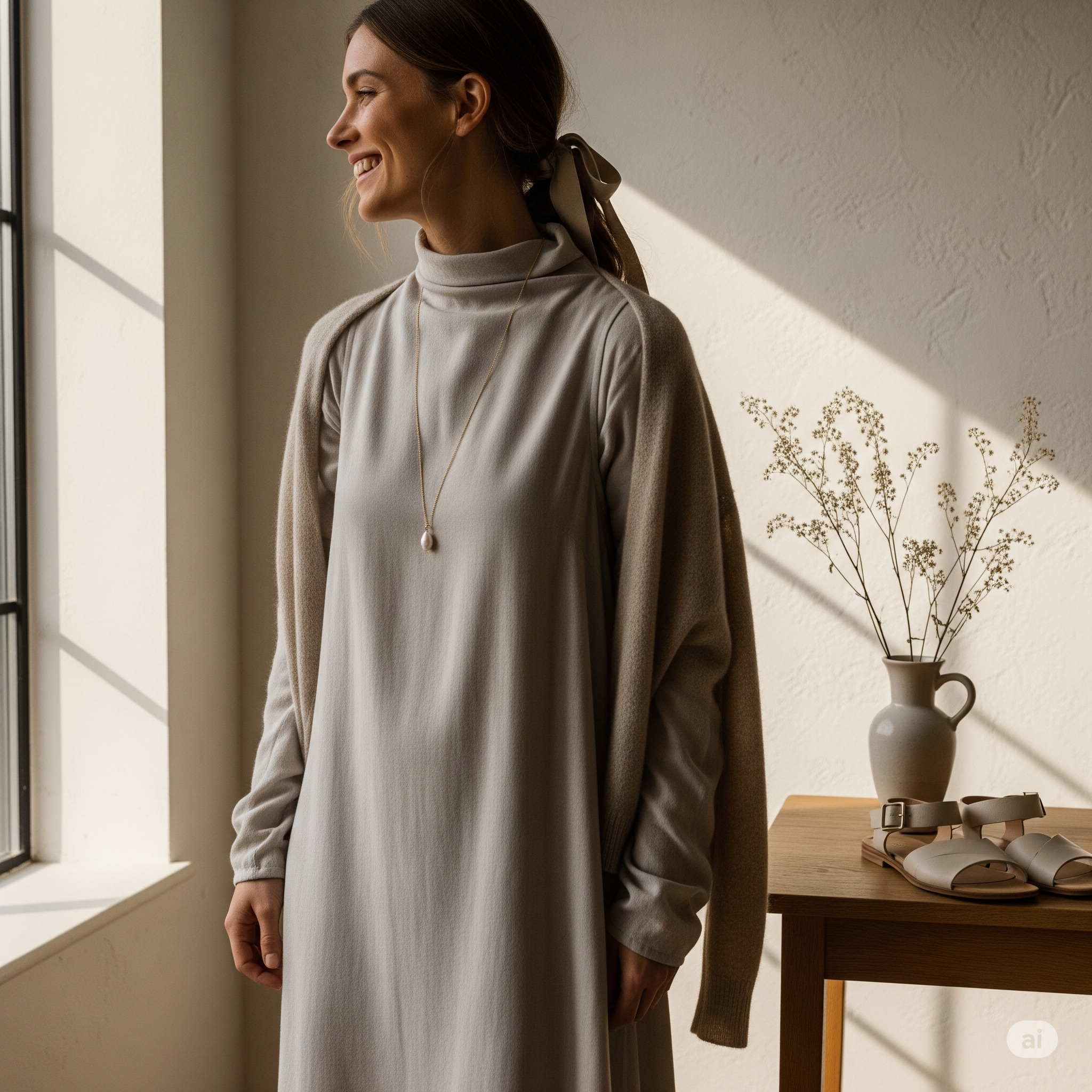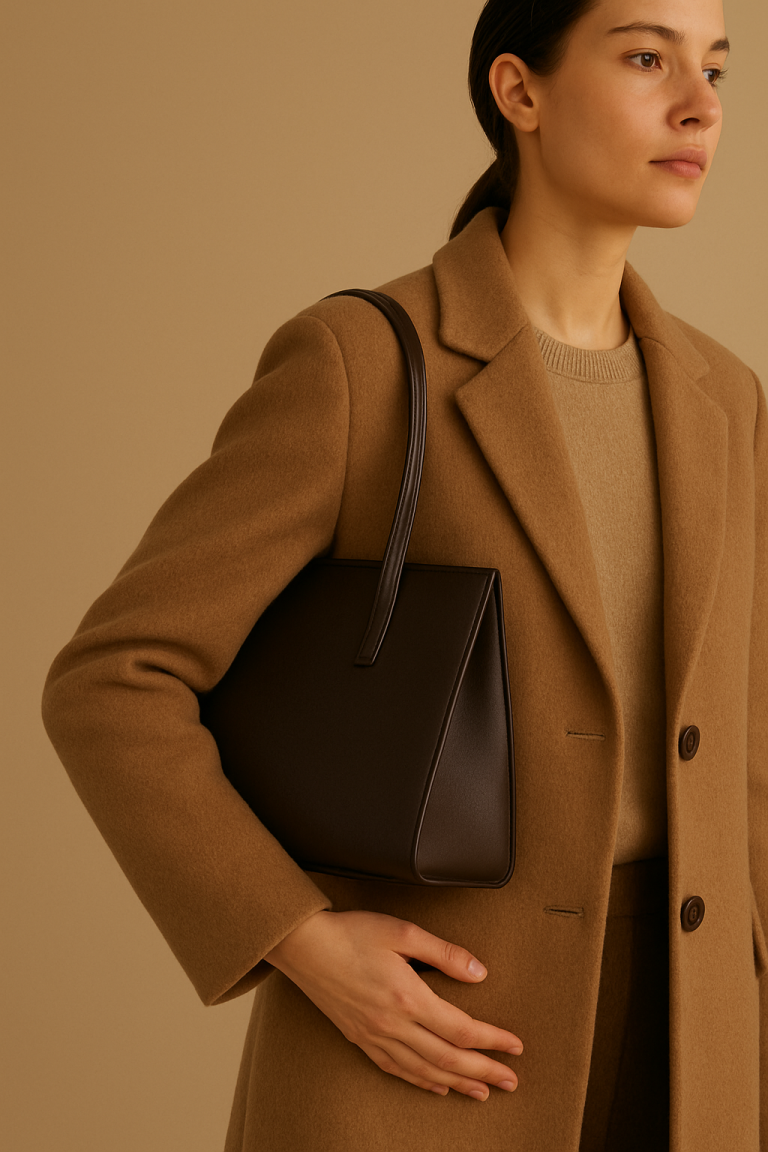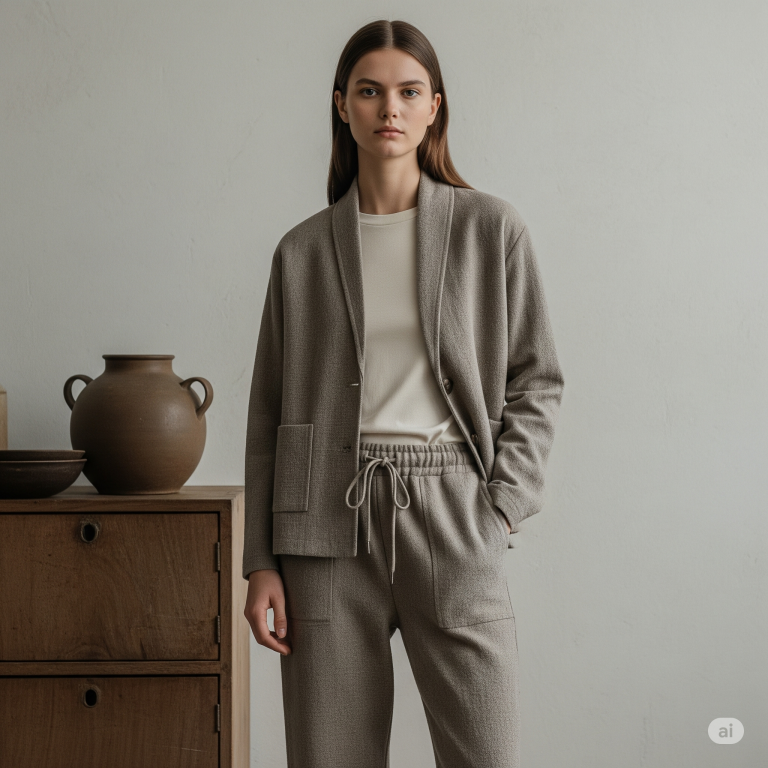
1. Whispers of Wealth: Why Loud Logos Are Out
Once, wealth spoke in monograms. The flashier, the better. But in this new era of elegance, silence is golden—literally. The rise of quiet luxury is more than a fashion trend; it’s a cultural reset. Gone are the days when status was measured by oversized logos, gilded belts, and head-to-toe designer prints. Today, the truly wealthy, the tastemakers, the subtly stylish—opt for anonymity, choosing craftsmanship over clout.
What changed? A combination of factors: pandemic-era introspection, growing climate awareness, economic volatility, and a rising disdain for performative consumerism. Social media, ironically, played a part too. As influencers flooded timelines with sponsored excess, a counter-current emerged—understated style became the new rebellion. The truly in-the-know began to whisper their wealth instead of shouting it. And the fashion world listened.
Luxury now lies in the details only connoisseurs recognize: a hand-stitched hem, ethically sourced materials, a silhouette that drapes like poetry. It’s no longer about flaunting wealth but about living well with intention.
2. The Power of the Pause: How Slow Fashion Became Desirable
Slow fashion was once the underdog—praised by environmentalists, but overlooked by mainstream consumers. Now, it’s wearing the crown. Why? Because in a world spinning at breakneck speed, taking the time to choose, invest, and cherish has become radical.
Quiet luxury thrives on this slowness. The garments are made to last, often handcrafted, often limited in quantity. The focus isn’t on the next drop—it’s on what endures. And for the modern consumer, longevity has become the ultimate form of luxury.
Designers like The Row, Lemaire, and Gabriela Hearst embody this ethos. Their collections are seasonless, built around versatility and timelessness. A coat from five years ago still feels relevant—not because it’s trendy, but because it transcends trend.
Slow fashion invites us to reframe luxury. It’s no longer about having more; it’s about having better. Owning a capsule wardrobe of 15 exquisite, sustainable pieces now signals a deeper sense of style than a closet bursting with fast fashion fads.
3. Soft Textures, Strong Statements: The Sensory Appeal of Eco-Luxury
Sustainability isn’t always rough-hewn and raw. In fact, eco-luxury can feel downright indulgent. Organic cashmere, cruelty-free silk, bamboo knits, and plant-dyed cottons—today’s textiles marry ethics with sensory pleasure.
The aesthetic of quiet luxury is inherently soft. Not just in fabric, but in form: fluid lines, neutral tones, gentle layering. There’s a tactile sensuality to these clothes. They aren’t just worn; they’re experienced.
This sensory depth is intentional. As consumers grow weary of throwaway culture, they crave depth—pieces that feel good on the body and the conscience. Brands like Mara Hoffman and Studio Nicholson lean into this, using sustainable processes while ensuring their garments exude softness, elegance, and effortlessness.
Even color palettes reflect this softness—earthy ochres, oatmeals, dusty sage, moonlit greys. The overall effect is calming, grounding, almost meditative. And in a world saturated with noise, this softness becomes powerfully disruptive.
4. Beyond the Brand: Dressing with Intention, Not Attention
In the era of sustainable quiet luxury, style becomes a philosophy. It’s no longer about who you’re wearing, but how and why.
Consumers are shifting from conspicuous to conscious consumption. They want to know the story behind their clothes: Who made this? How were they treated? What impact did this have on the planet? Labels that answer these questions transparently—like Eileen Fisher, Sézane, or Filippa K—build loyalty not through marketing, but through mission-driven design.
Minimalism plays a key role here, but it’s not sterile minimalism. It’s warm, personal, curated. Outfits feel like extensions of the wearer—uncluttered, expressive, quietly powerful.
The idea is not to attract attention but to command respect through restraint. This is fashion for people who have nothing to prove, and everything to express. A soft-shouldered blazer, worn with purpose, says more than any logo ever could.
5. Green is the New Gold: When Sustainability Becomes the Ultimate Status
Status symbols evolve. Today, sustainability is the new exclusivity. It signals access—not to wealth alone, but to knowledge, values, and foresight.
This isn’t about performative greenwashing. True sustainable luxury is rooted in transparency, traceability, and transformation. From regenerative farming to carbon-neutral ateliers, brands are investing in better practices—not just to save the planet, but to redefine luxury’s very DNA.
Eco-conscious materials once seen as “alternative” are now industry gold standards. Mylo leather (from mushrooms), Piñatex (from pineapples), and Tencel (from eucalyptus pulp) are gracing the runways and wardrobes of fashion elites.
But beyond materials, sustainability in quiet luxury is about slowing down the cycle—less production, less waste, more care. The fewer, finer model isn’t just better for the earth—it’s more aligned with the modern consumer’s values and lifestyle.
Sustainability has become a marker of taste, depth, and vision. It separates the surface-level fashionable from the fashion-forward ethical elite.
6. Beauty in the Background: The Rise of Minimalist Glam
Quiet luxury doesn’t stop at clothing. The beauty world, too, is embracing a quieter, more conscious form of glamour.
Skin-first, glow-from-within beauty is dominating both runways and real life. Instead of elaborate contouring and maximalist makeup routines, we’re seeing a return to effortless elegance—tinted serums, brushed-up brows, dewy balms, and multi-use sticks.
Sustainable beauty brands like Ilia, Merit, and Saie are leading the way, blending clean ingredients with luxe aesthetics. Packaging is minimal yet refined. Formulas are effective yet gentle. And messaging is refreshingly honest.
This minimalist glam speaks volumes. It’s about enhancing, not masking—allowing one’s natural features to shine through, rather than covering them up. It aligns perfectly with the values of quiet luxury: less noise, more nuance.
Even fragrance has gone quiet. Soft skin scents, subtle musks, and genderless blends have replaced bold, room-filling perfumes. It’s an olfactory whisper instead of a scream.
7. The Future is Subtle: Why Gen Z and Millennials Are Embracing Understated Opulence
It’s easy to assume that quiet luxury is an old-money aesthetic. But the real drivers of this movement? Millennials and Gen Z.
Disillusioned by overconsumption, climate anxiety, and economic precarity, younger generations are redefining success. They value authenticity, sustainability, and emotional resonance over outward display. They want their purchases to reflect their values—and their values are deeply rooted in ethics, individuality, and emotional intelligence.
This new opulence is digital-native but nature-aligned. It doesn’t just look good—it feels good, does good, and tells a deeper story. Whether it’s a handcrafted linen jumpsuit from a small atelier or a refillable lipstick with clean ingredients, every item is chosen with intention.
Even digital fashion—used in virtual environments and avatars—is leaning minimalist and sustainable, proving that this aesthetic isn’t just for the physical world.
In short, the youth aren’t buying into luxury. They’re redefining it. And in doing so, they’re paving the way for a future that’s slower, softer, and stunningly more sustainable.
Conclusion: The New Quiet Confidence
Quiet luxury is not a trend. It’s a cultural shift—an evolution in how we define beauty, success, and style. It’s about rejecting the fast and the flashy in favor of the slow, the soft, and the stunning. It’s about expressing wealth not through noise, but through knowledge. And most importantly, it’s about fashion and beauty that speaks with purpose—and whispers only to those who are truly listening.



